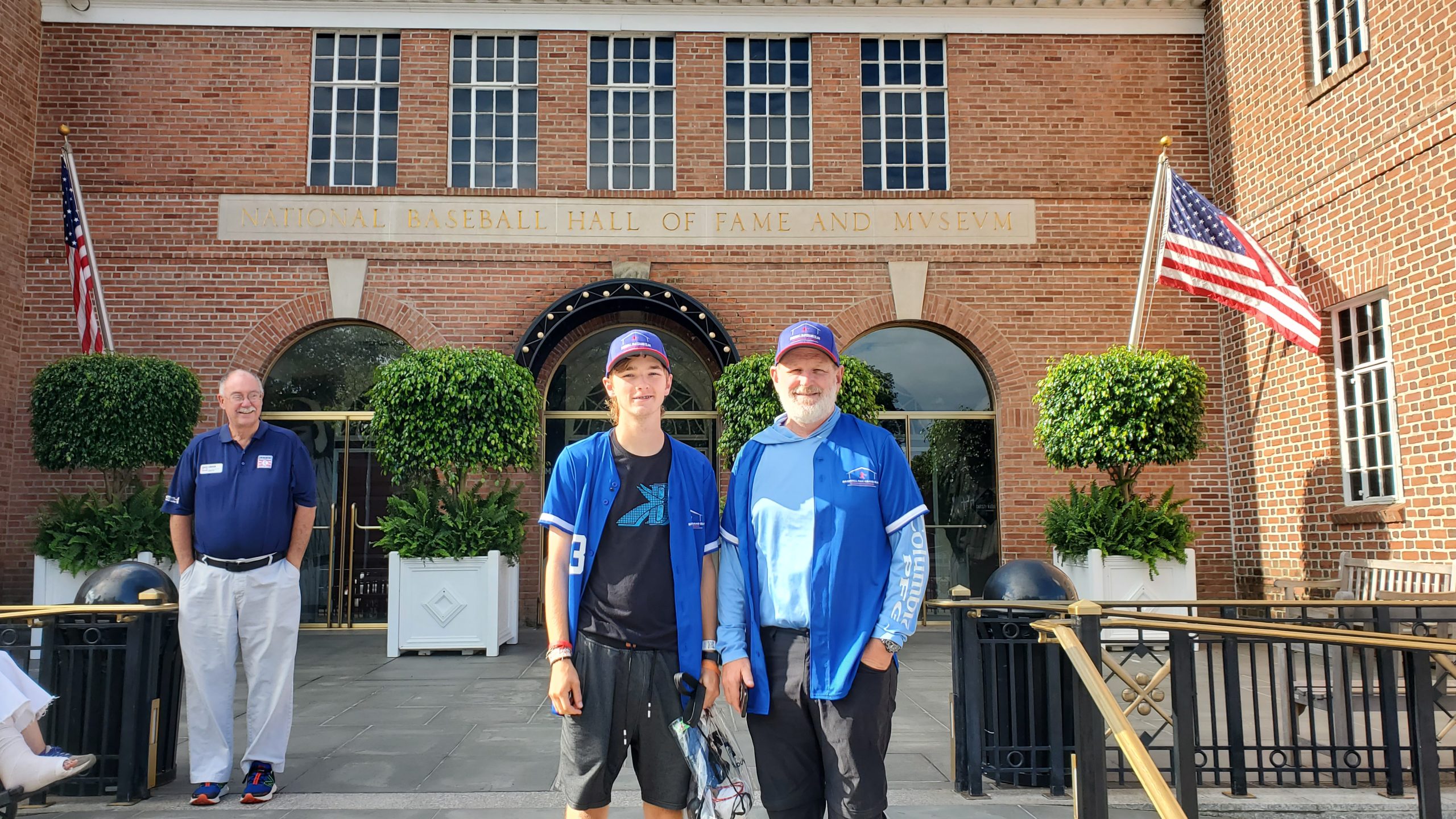On Friday, August 25th, we left Indian Brave Campground outside of Pittsburgh. We drove up through Pennsylvania, into New York State, along Lake Erie, and then east to Cooperstown. We had a lovely dinner at Mel’s at 22, which we highly recommend to anyone planning a visit to the National Baseball Hall of Fame! After that, we scouted out the museum and parking situation. After a stop at the grocery store, we headed back for a good night’s sleep at Cooperstown Family Campground.
Why is the National Baseball Hall of Fame in Cooperstown?
As you drive toward Cooperstown, you leave large cities (like Pittsburgh) and go through somewhat smaller ones, like Syracuse. Then you go through towns with stop-lights and fast food restaurants. Eventually, you pass through two back to back city markers without anything in sight. Really. I mean, there must be a post office somewhere, and we did see a barn. But that’s it.
Cooperstown is out in the middle of upstate New York. To be fair, it is near some important locations, like Colgate University, my alma mater! That’s why I’m the only one of us who had actually already been to the National Baseball Hall of Fame.
As you drive through the sunflower and corn fields, you do begin to wonder why they chose Cooperstown. As I turns out, it’s based on a myth.
Cooperstown was the hometown of Abner Doubleday, who was credited with creating the sport sometime in the early 1800s. Unfortunately, that turns out not to be true!
Brad didn’t believe me at first. Like many people, he had heard the myth and took it as true. After a little research, and a review of the small display at the National Baseball Hall of Fame that refutes the story, we now know that the United States’ national pastime has much older origins.
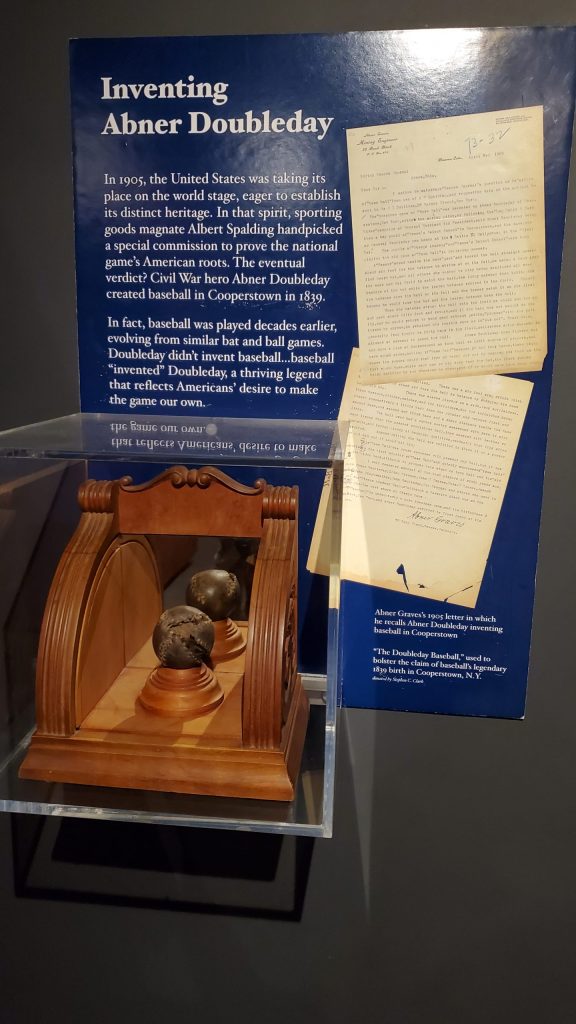
Abner Doubleday Did Not Invent Baseball
They myth began with the Spalding Commission in 1905. A.G. Spalding, the sporting goods businessman and former baseball player, created a commission to establish the origins of baseball as a uniquely American sport.
Like many pastimes that evolve over decades, if not centuries, baseball’s origins were more difficult to trace than originally anticipated. That’s when Abner Graves, a mining engineer, sent a letter to the commission reporting that baseball was invented by a revered, and now deceased, Civil War hero named Abner Doubleday. It should be noted that the Abners didn’t actually know one another. Graves may have known one or more of the other Abner’s cousins. But that’s as close as he got to a relationship.
There’s also no evidence that Abner Doubleday invented the game in his papers, records of speeches, media coverage, or anywhere else. In fact, he rarely even mentions the game. When the Commission requested evidence to back up Graves’ claim, he said that the original drawing had not been retained, and the original players of the game were all deceased. However, the story met the Commission’s objective. It established the United States as the place baseball began. The Commission announced their conclusion that Doubleday was the founder of baseball, and then concluded their investigation.
So, Who Did Invent Baseball?
Baseball evolved from stick and ball games brought to the United States from England and many other cultures. Most games, such as rounders, were largely children’s games. In the late 1830s, adults began forming leagues and the rules became slightly more uniform. The first uniform rules were established by the National Baseball Association of Baseball Players in New York City in 1858.
Throughout these years, teams were entirely amateur and often formed with players from a company, a town, or another social group. While the game was almost exclusively played by men, the teams included anyone who was a strong player, regardless of race, country of origin, or religion.
In 1869, the professional baseball team was established in Cincinnati: the Cincinnati Red Stockings. Soon thereafter, professional teams began forming across the eastern United States. In 1871 the National Association of Professional Baseball Players formed to help standardize the rules, followed five years later by the Major League Baseball association. Unfortunately, this was about the time that baseball teams began excluding players, even if they were outstanding.
Highlights from the National Baseball Hall of Fame
The National Baseball Hall of Fame has outstanding exhibits following the sport from its earliest variations (in Egypt during the time of the pharaohs) through Britain, and into the United States. It shows innovations in the sport, including some that didn’t work as expected, such as a flat-sided bat.

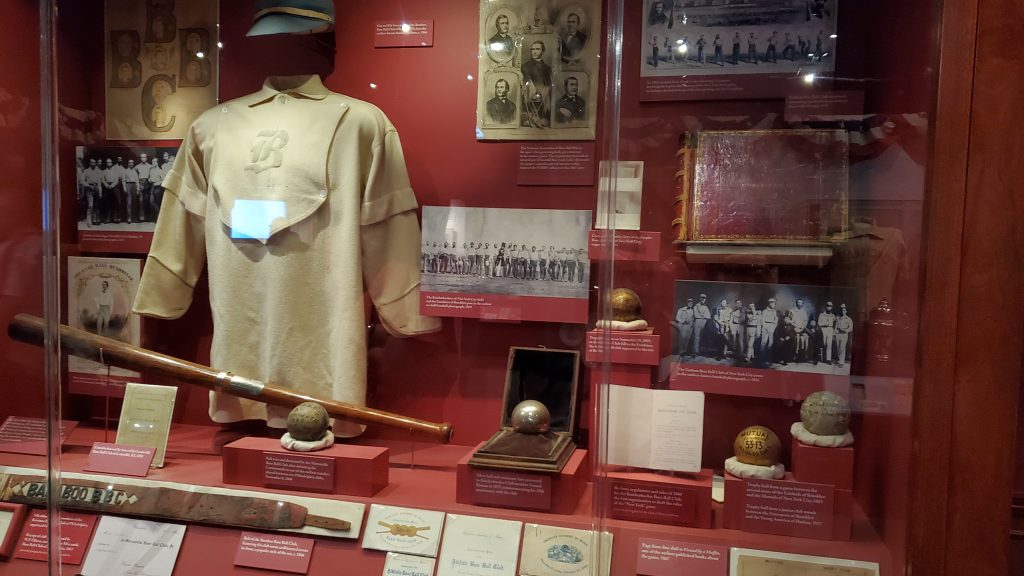

It also includes signs that tell the story of baseball’s exclusionary history. We saw early advertisements for position players that stated that “Irish need not apply.” I am sure that people of color were also excluded at that point, but that was so clearly etched in baseball knowledge it wasn’t written. The contributions of Latino players were also profiled, along with the discrimination they faced. So were women’s teams.
Early women’s uniforms were still skirts, although I believe they had shorts underneath. Still, I can’t imagine that they were comfortable. Can you imagine having to slide into home wearing a skirt?! I also didn’t realize that there have been more recent attempts to create a women’s baseball program, including sponsorship of a women’s team in Colorado that took on many of the MLB teams.
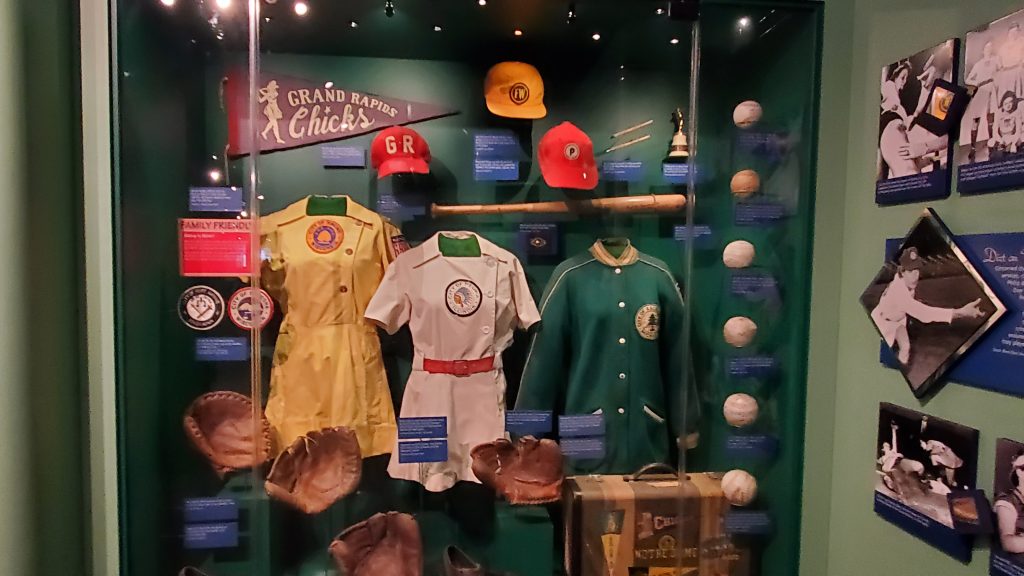
The best parts of the museum were the memorabilia from legends of the game, all of whom had plaques commemorating their achievements in the Hall of Fame on the first floor. Ryan stood in Hank Aaron’s locker, marveled at Babe Ruth’s heavy bat, pointed out the memorabilia from the two Mariners Hall of Fame players, and discussed the records set and broken for everything from pitch speed to player size. I pointed out to Brad that he could still play ball. After all, at 59 years old, the oldest player on record was just a few years younger than he is now!
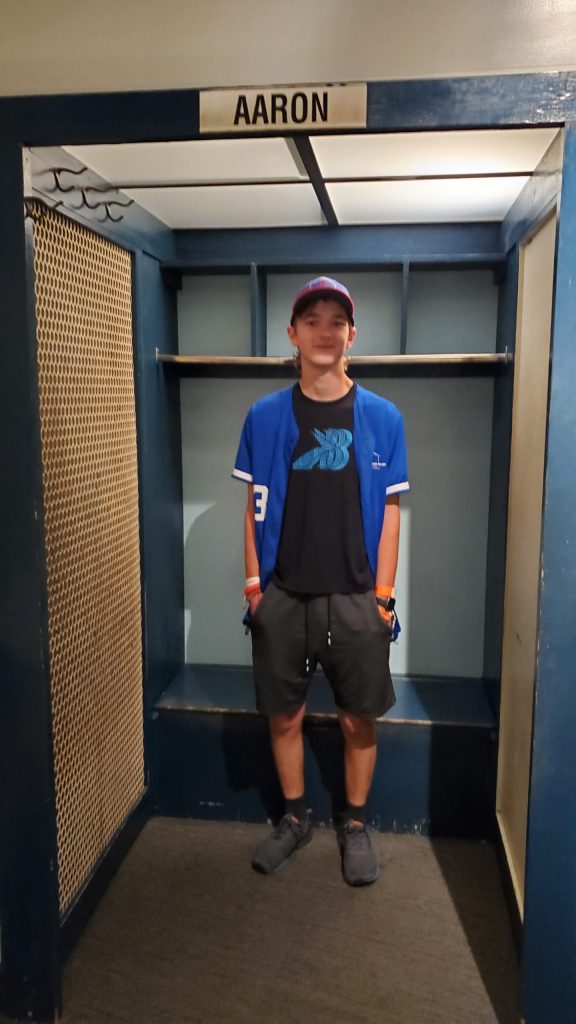
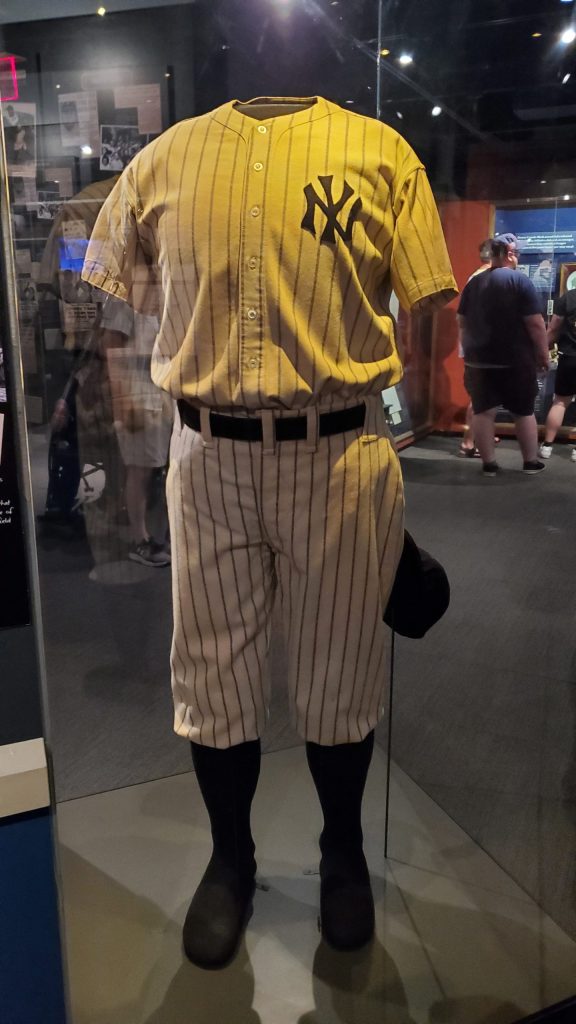
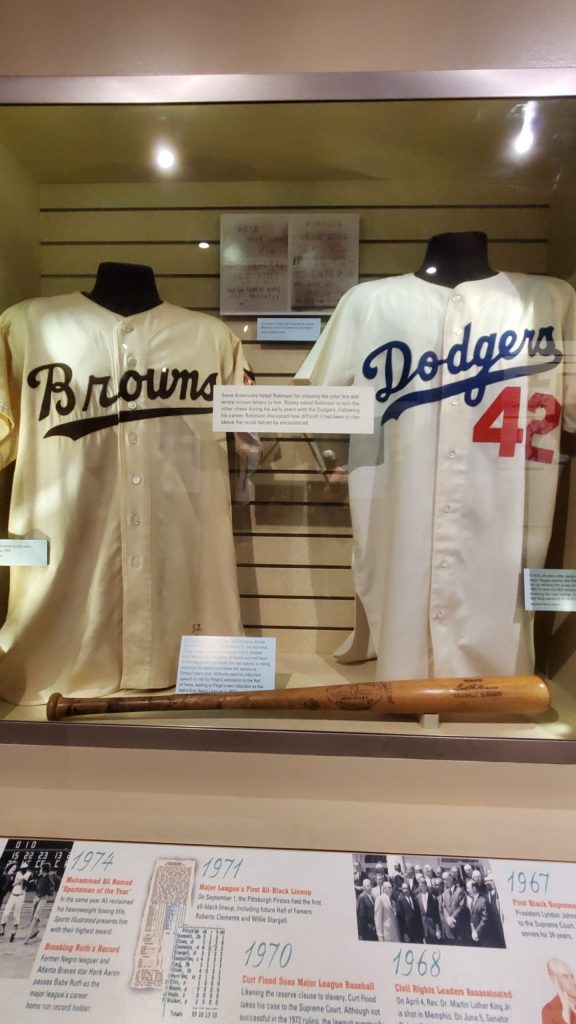
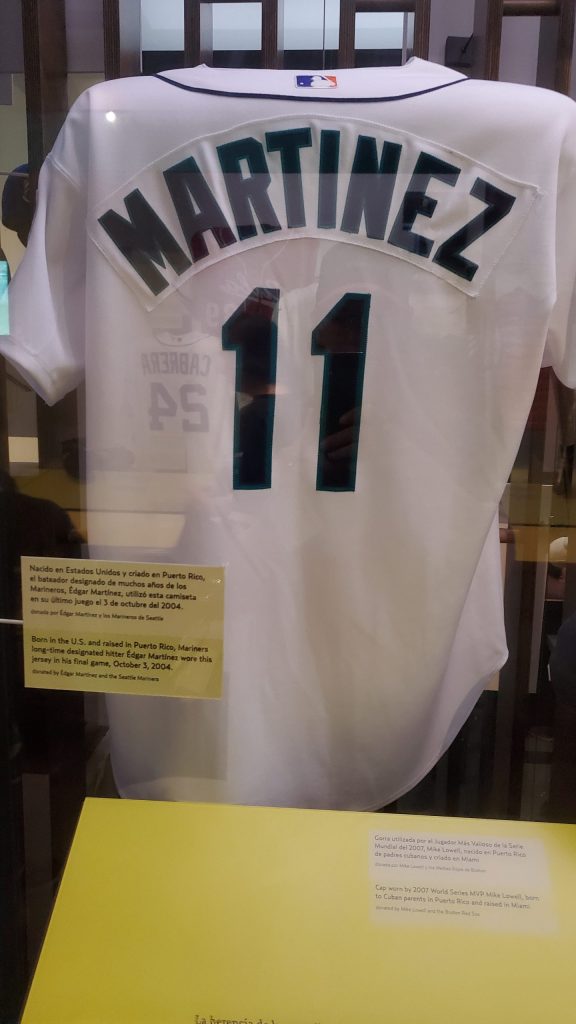
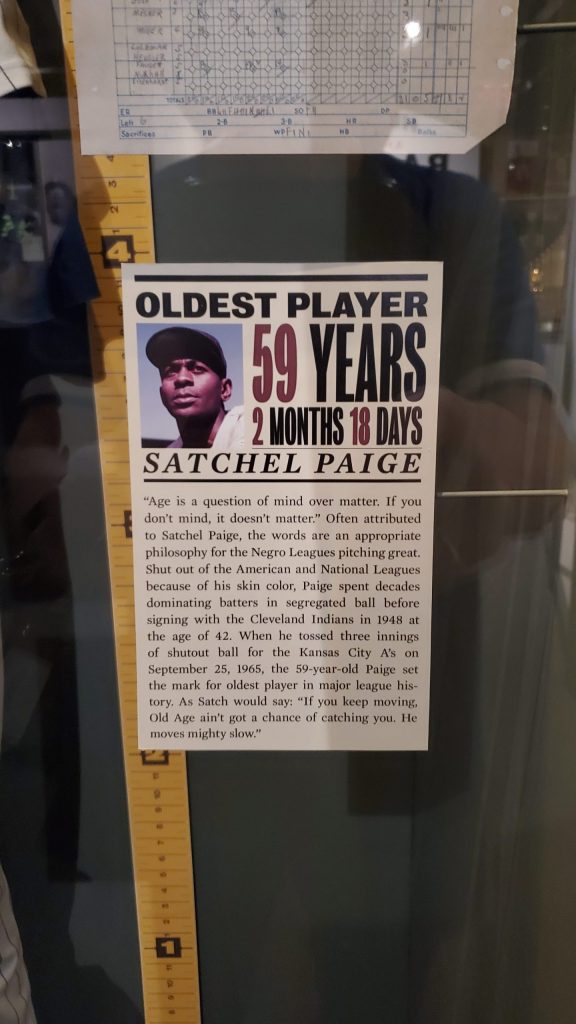
Brad and Ryan walked through the Hall of Fame for about an hour, reviewing each year’s Hall of Fame plaques and discussing the history, the players, and their achievements. I spent the last hour sitting in the car, as we officially stayed well past the two-hour limit for public parking in Cooperstown!
A Stop at Niagara Falls
After we finished our visit to the National Baseball Hall of Fame, we went back to the campground to pick up the trailer, then set our GPS for Ontario, Canada. On the way, we made a quick visit to Niagara Falls.
Even though I spent four years in upstate New York, I never made it to Niagara Falls. So, this was a treat! Niagara Falls is only one of several waterfalls in the area. The Niagara Falls area also includes Bridal Veil Falls and Horseshoe Falls, the largest of the three. We spent almost two hours walking around, taking pictures, and admiring the natural beauty.




Up Next
After our brief stop at the border, we continued into Ontario, Canada. We spent the night at a lovely campground in a provincial park, Bronte Creek Provincial Park. Tomorrow, we’re headed to Rogers Centre to see the Toronto Blue Jays play the Cleveland Guardians.
